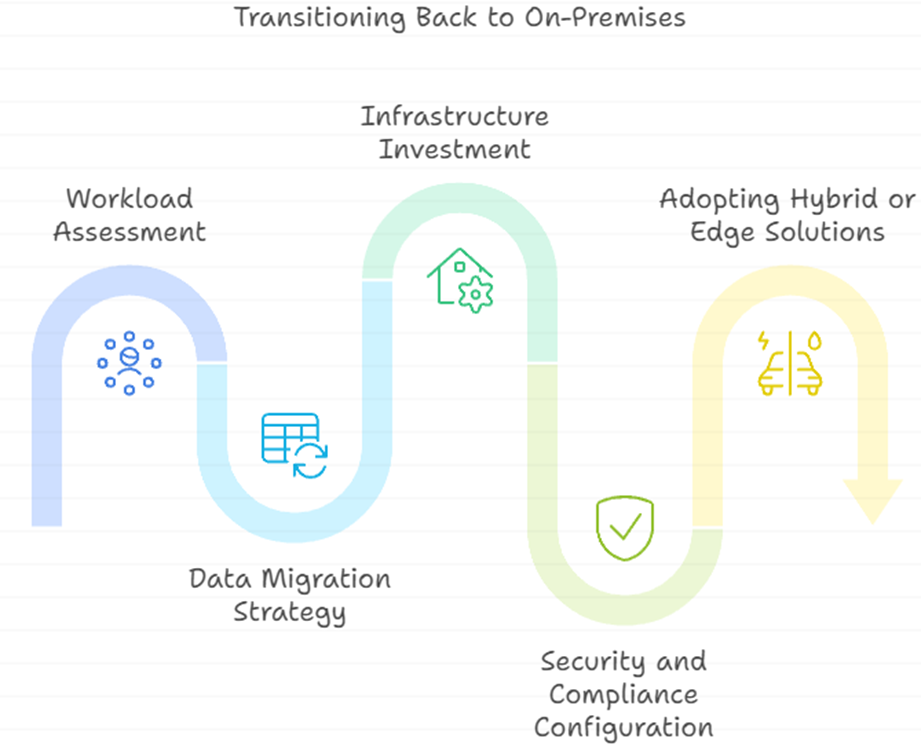Share this link via
Or copy link
For over a decade, the "cloud-first" approach has been a cornerstone of IT strategies, offering flexibility, scalability, and cost savings. However, a new trend has emerged: companies are shifting workloads back to on-premises or hybrid environments, a phenomenon known as "cloud repatriation" or "cloud exit." This shift is not just about costs but also about regaining control, optimizing performance, and better managing vendor relationships. Here, we explore the key reasons behind this transition, examples of companies returning to on-premises solutions, and strategies cloud providers can consider to retain their customers.
Cloud pricing structures, while initially attractive, can become complex and costly as companies scale. Many organizations experience "cloud cost shock" due to hidden fees for storage, data transfer, and high compute demand. According to a recent Forbes article on cloud repatriation, predictable and high-demand workloads can be more cost-effective to manage on-premises, where expenses can be controlled through capital expenditures (CapEx) rather than variable operational costs (OpEx).
Applications requiring consistent performance and low latency, such as real-time financial trading or industrial automation, may face challenges in the cloud. A Techopedia article highlights how companies are moving these workloads back on-premises to ensure greater proximity to data sources, reducing latency and improving performance.
Industries with strict regulatory requirements, such as healthcare, finance, and government, often find that keeping data on-premises facilitates compliance. According to TechPrepTalks, cloud repatriation can provide companies with greater control over access, privacy, and data security, reducing risks associated with shared cloud environments and making it easier to comply with data residency laws.
On-premises solutions offer more customization options for companies with specialized needs that are not always viable in a cloud environment. By managing their own infrastructure, organizations can tailor hardware, software, and network configurations to meet specific requirements.
Vendor dependency remains a major concern. Proprietary cloud tools, migration fees, and customized configurations make data mobility difficult. Forbes notes that reducing reliance on a single provider through on-premises or hybrid workloads can help companies maintain flexibility and avoid long-term commitments.

A recent example is Neon Labs, a Web3 company focused on blockchain interoperability. Initially, they used cloud infrastructure for high-transaction workloads, but rising costs and performance limitations led them to migrate to dedicated servers.
A 60% reduction in monthly costs, allowing reinvestment in growth and product development.
A 3x increase in performance, reducing blockchain processing times from over ten seconds to just a few seconds, improving user experience and operational efficiency.
For companies considering a similar move, the transition requires strategic planning:
Companies identify which workloads benefit most from on-premises infrastructure, particularly those with high data demands or low latency tolerance.
Moving large volumes of data back can be costly due to cloud exit fees. Organizations adopt phased migrations and optimization strategies to minimize costs and disruptions.
Companies invest in hardware, networking, and support for on-premises operations, using colocation services to reduce upfront costs.
Migration enables greater control over security and regulatory compliance, facilitating stricter data governance.
Many companies keep key workloads on-premises while still leveraging the cloud for scalability. Edge computing is on the rise, enabling real-time processing without exclusive cloud dependency.

To counter the cloud repatriation trend, cloud providers can address key customer concerns with several strategies:
Offering clearer, more predictable pricing would help mitigate cost concerns faced by many businesses. Simplifying billing structures and reducing hidden fees would give companies more confidence in managing cloud expenses, as noted in the Forbes article.
Enhancing interoperability between on-premises and cloud platforms can alleviate concerns about technology lock-in. By supporting hybrid and multi-cloud architectures, cloud providers can facilitate workload transitions as needed.
Providing flexible and customizable service options would make it easier for businesses with unique infrastructure needs to remain within a cloud provider’s ecosystem. Customization can be beneficial for companies with specialized applications requiring configurations beyond standard cloud offerings.
As suggested by Techopedia, hybrid and edge computing models offer ways to deliver low-latency solutions while balancing the benefits of the cloud and on-premises resources. Expanding these capabilities can attract companies needing a mix of real-time data processing and cloud flexibility.
The shift from cloud to on-premises is a calculated move toward better cost control, data security, and operational efficiency. As companies like Neon Labs have demonstrated, transitioning workloads on-premises can lead to substantial cost savings and improved performance for certain applications.
While cloud services remain essential for many workloads, on-premises and hybrid models are gaining traction as viable long-term IT strategies. To adapt, cloud providers must respond to changing customer needs with pricing transparency, flexibility, and support for multi-cloud interoperability. By doing so, they can help businesses harness cloud benefits without the limitations driving cloud repatriation decisions.
Written by Juliano Souza Published on 11 February 2025
Share this link via
Or copy link